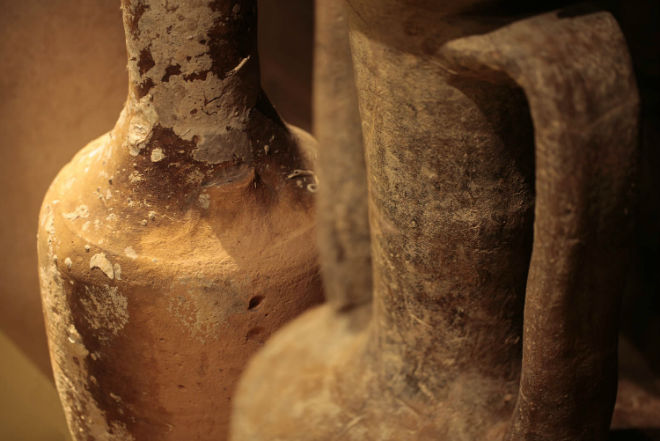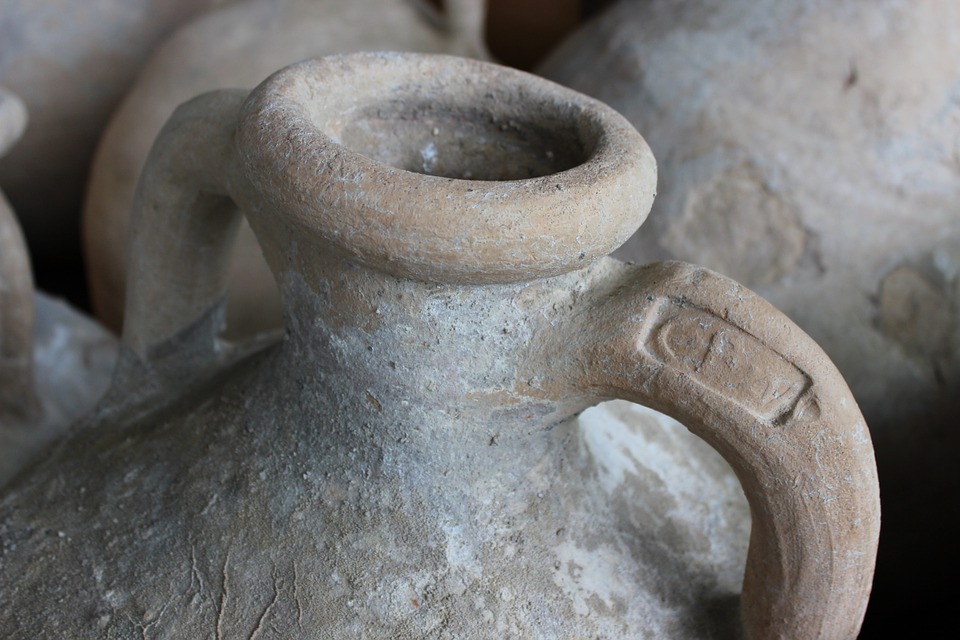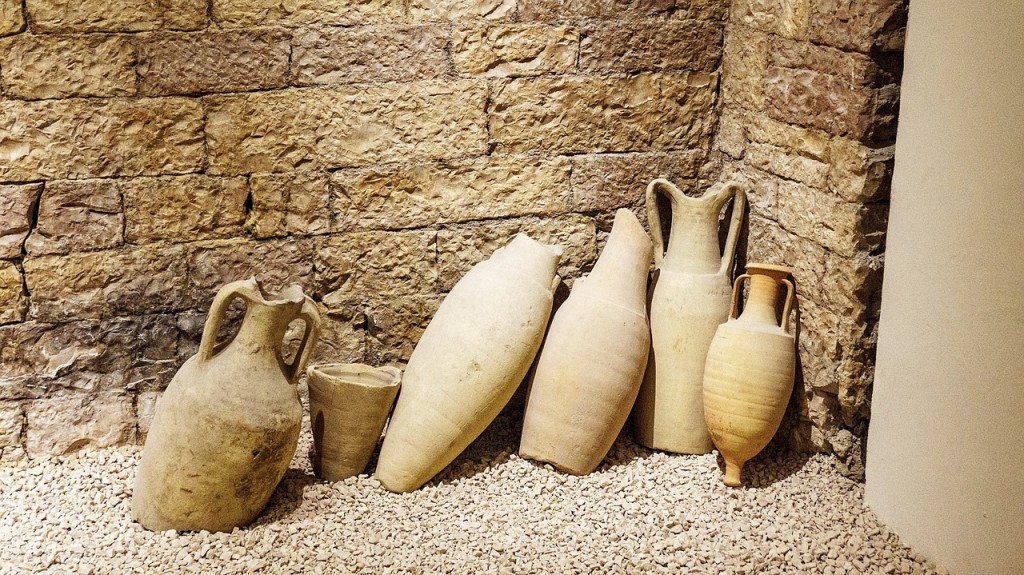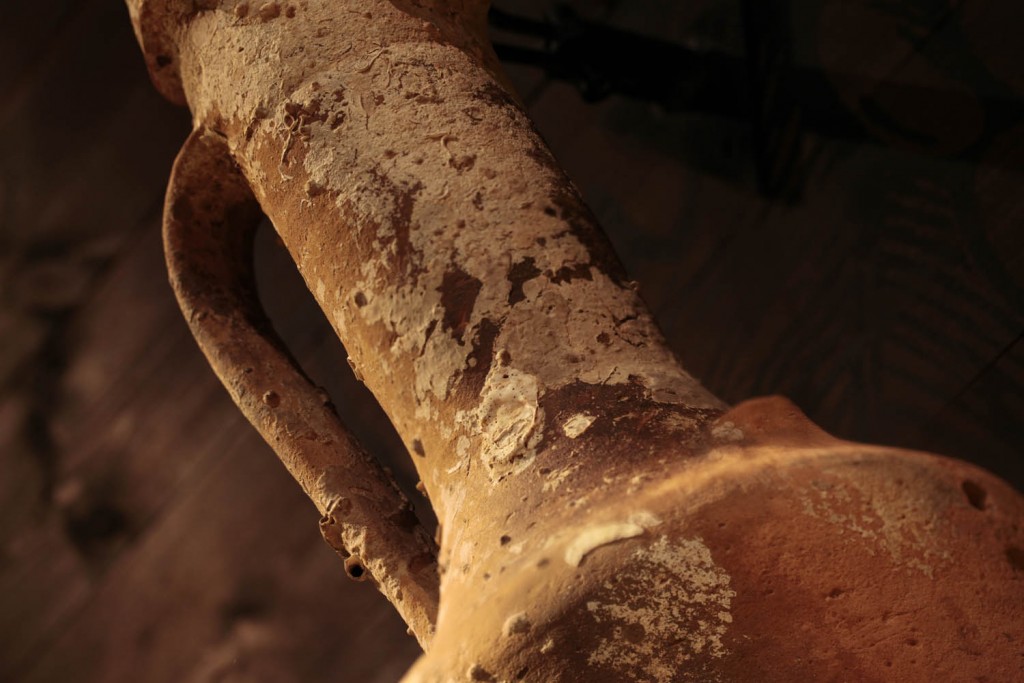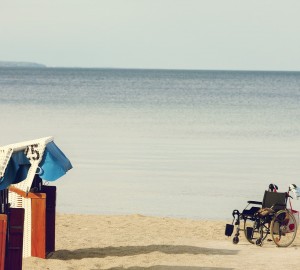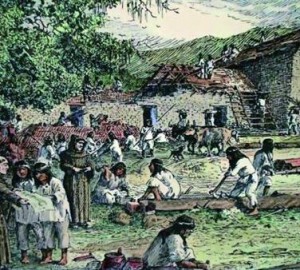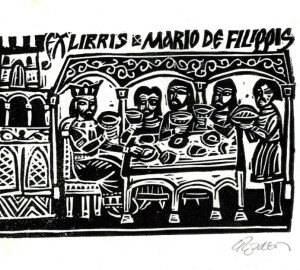Many of the aspects that have shaped the way in which we understand and conceive the world of wine today, as is the case in many other areas of life today, have been defined by practically casual factors. Throughout the more than 8,000 years of history that we have shared between man and wine, The need to find solutions to different technical and logistical issues during the processes of wine production, conservation, transport, trade and consumption have conditioned the way in which we relate to wine today. The historical evolution of all these aspects has even led to the fact that we identify certain characteristics in a wine as positive: its age and crianza, its colour, a certain aroma or flavour, etc.
In this sense, today we would like to The amphorae were used in different periods of antiquity. A small approach to get to know the way in which cultures such as the Greeks, Romans or Phoenicians used these containers to preserve and transport wine. A role that was key in the evolution of the way wine was made and consumed in those periods of history and, above all, in the expansion of the wine trade throughout the Mediterranean. An influence that we can still detect in today's perception of wine.
Amphorae in the history of wine
The earliest records of the use of amphorae for the storage of foodstuffs and other products date back to around the 15th century BC Archaeological finds near the present-day coasts of Syria and Lebanon suggest that amphorae were already being used as storage and transport utensils at that time. Other cultures, such as the Phoenicians and Egyptians, also used amphorae made of terracotta, metal and other materials to store various foodstuffs and products, both solid and liquid.
But undoubtedly, The cultures that used amphorae in this way were The most extensive and standard form of food transport, and in particular for the preservation and trade of wine, was that of ancient Greece and Rome. The dominance of these civilisations over the Mediterranean and their technical innovations allowed them to create and extend different trade networks that reached the entire Mediterranean basin. Thus, the use of amphorae was the most common way of transporting goods by sea for nearly two millennia, from Antiquity until around the 7th century AD.
The role of amphorae in wine preservation
The Aegean peoples of the island of Crete were the first to use amphorae to store and transport food on a regular basis. Later, the Greeks and Romans adopted this solution and standardised it for the transport of goods by sea. Thus, amphorae were used for the fish trade, they were used to trade fish, fruits such as olives or grapes, cereals or liquid foodstuffs such as olive oil and, of course, wine.
In terms of wine preservation, the use of amphorae and their optimisation brought about a real revolution. The amphorae were made from fired clay made from different types of clay, depending on the place of manufacture. When they were used to store wine, they were treated with pez, a type of rosin from the resin of pine and other conifers, which made the amphorae waterproof and prevented the liquid from seeping through the porous material. This resinous material was also used to treat the lids and stoppers with which the amphorae were sealed. Waxes, oils and other substances were also used to seal these closures almost hermetically.
Thanks to this technical advance, which minimised the entry of air into the storage containers, Wines could now be kept for years. Previously, most Mediterranean civilisations only used to consume young wines, which were kept in leather, wooden or metal containers that were not completely closed. This favoured excessive oxygenation of the wine, its rancidity and its transformation into vinegar.
Since the use of amphorae, Greeks and Romans began to enjoy old wines and developed a special taste for them.. The Romans, in particular, considered that these wines were stronger and more intense and that their taste was more interesting than that of young wines. They preferred wines that had been kept in clay amphorae for more than four years. Some of the most sought-after wines of the time, such as falerno or sorrentino, could be kept in these containers for more than 25 years crianza .
The importance of amphorae for the transport of wine
From the fact that the amphorae allowed the wine to be preserved, its crianza and its evolution, it was derived also the possibility of transporting it over much longer distances. Thus, the great Mediterranean trade routes established first by the Greeks and later by the Romans were also used for the wine trade. So intense was the circulation of amphorae around the Mediterranean during these centuries that each culture had its own standards: Greek amphorae had a capacity of about 26 litres of water; Roman amphorae had a capacity of about 32 litres; in Egypt, the amphora had a capacity of 27 litres; in Babylon, it was 30 litres; etc.
Possibly it was the Romans who perfected the amphora the most. as a container for transporting wine. For centuries they traded the precious liquid and transported it by sea to the most remote corners of the Empire and beyond. The amphorae could vary in size, from the smallest amphorae measuring thirty centimetres to the largest measuring one and a half metres. However, it was the Romans the most standardised size of Roman amphora for transporting wine had an exact capacity of 39 litres.
As for the shape of the vessel, this was not accidental either, but was perfectly designed for transport by ship. Starting with the two handles that gave rise to the name of the vessel (amphora: from the Greek /ámphoreus/ "carrying on both sides".), which made it possible to hold them in order to move them between one or two people, or to fasten them with ropes and other tools on board ships. Roman amphorae also evolved from the wider and more regular shape of Greek amphorae to a more stylised morphology, with much narrower necks to prevent spillage and the entry of air. For their part, the bases of Roman amphorae also served a double specific purpose that favoured transport: on the one hand, the shape was similar to that of an inverted dome, which gave the amphorae a special resistance to the forces and pressures they had to experience during the voyages; on the other hand, the pointed end allowed the amphorae to be stuck in the sand on the beaches, and they could be placed in a vertical position before being loaded onto the ships or during the subsequent unloading. During the voyage, they were placed inside the holds of the ships on specific supports that allowed them to be transported vertically.
Another of the characteristic aspects of the world of wine that took place with the proliferation of amphorae and their trade around the Mediterranean was what we could consider as the The label was a precursor of the labelling system used on wine bottles today.. At that time, each Roman amphora travelled with a seal that identified its owner, the place and year of production of the wine, the type of wine or the place to which it was to be sent.
As we have seen, many of the aspects that we value or take into account today when enjoying a wine originated in the use of amphorae for its preservation and transport. Later on, these would be replaced by wooden barrelsThe first of these, which also made a very important contribution to our way of producing and consuming wine, and finally the glass bottles that we still use today. To understand this evolution in the relationship between man and wine throughout the course of history, there is nothing better than to visit the Museum Vivanco of Wine Culturewhere, among many other things, we will be able to contemplate the magnificent collection of amphorae from different periods and places of antiquity.






